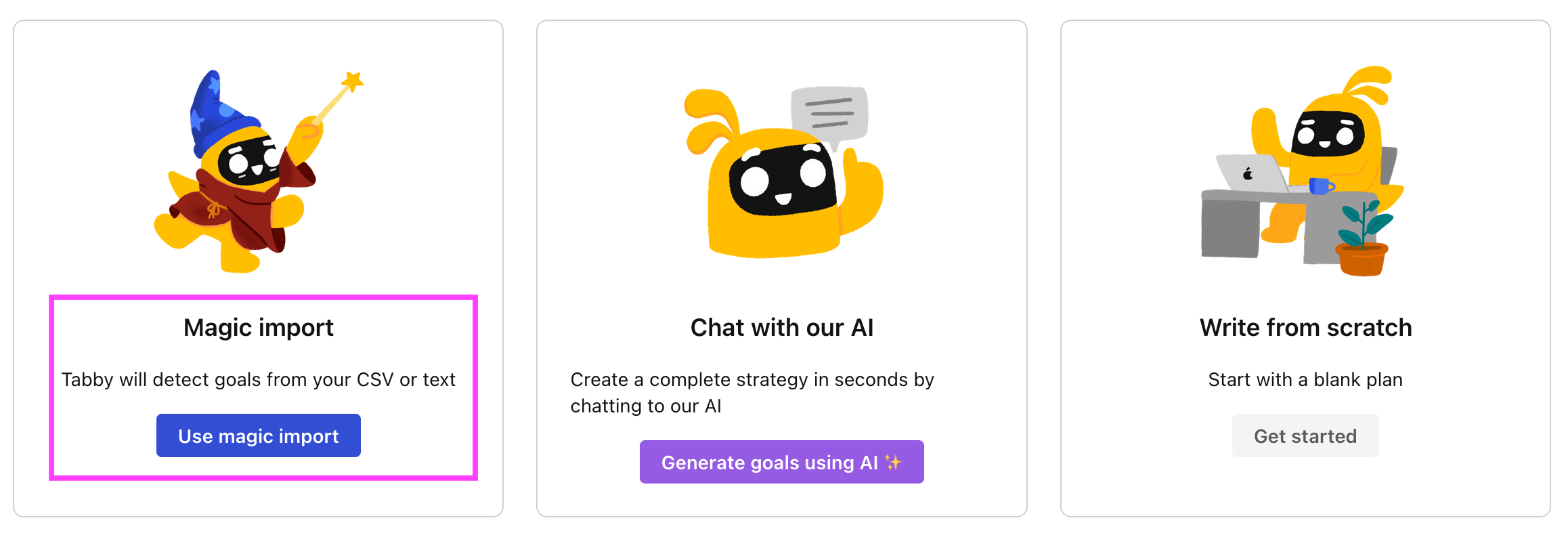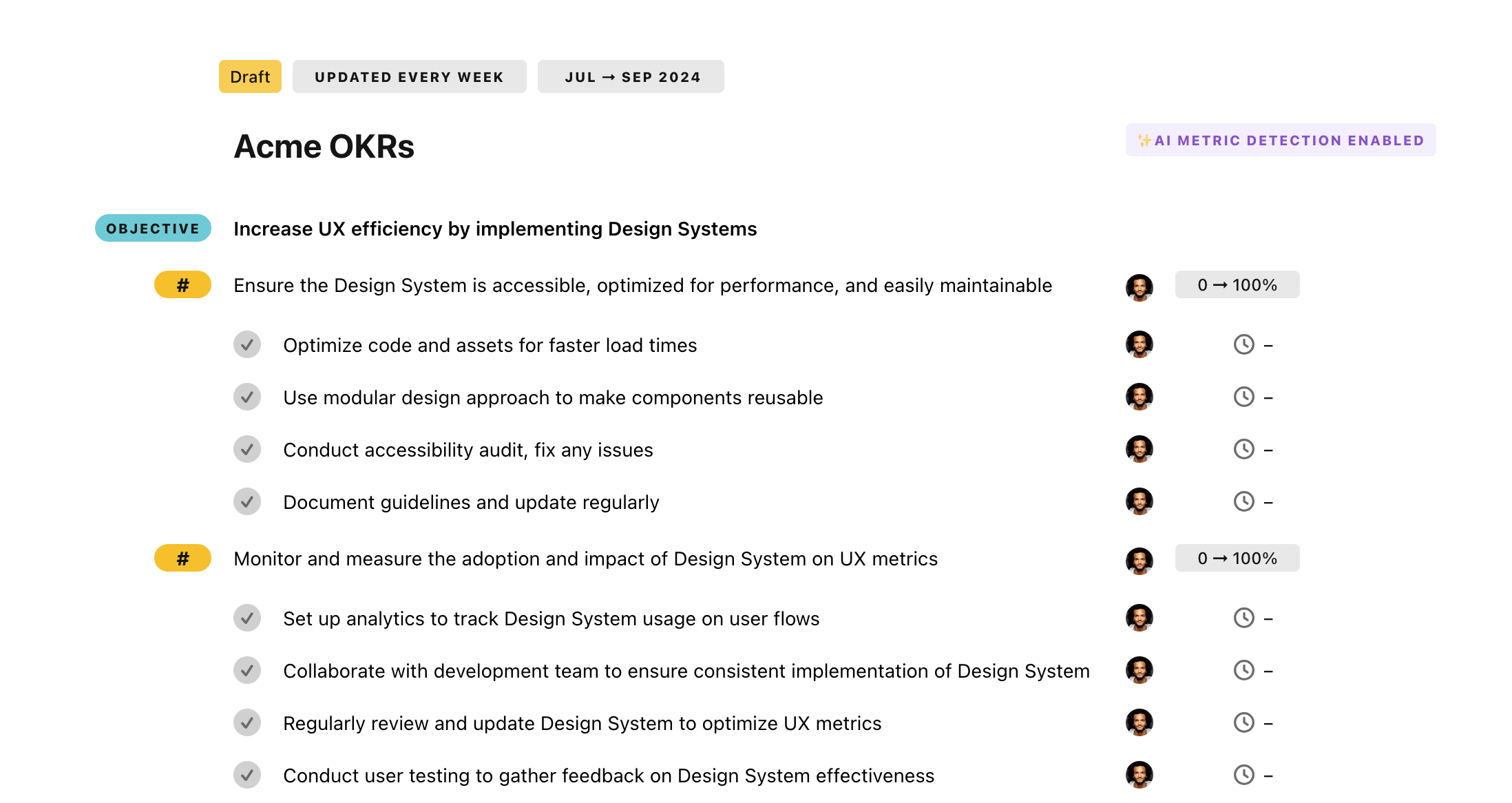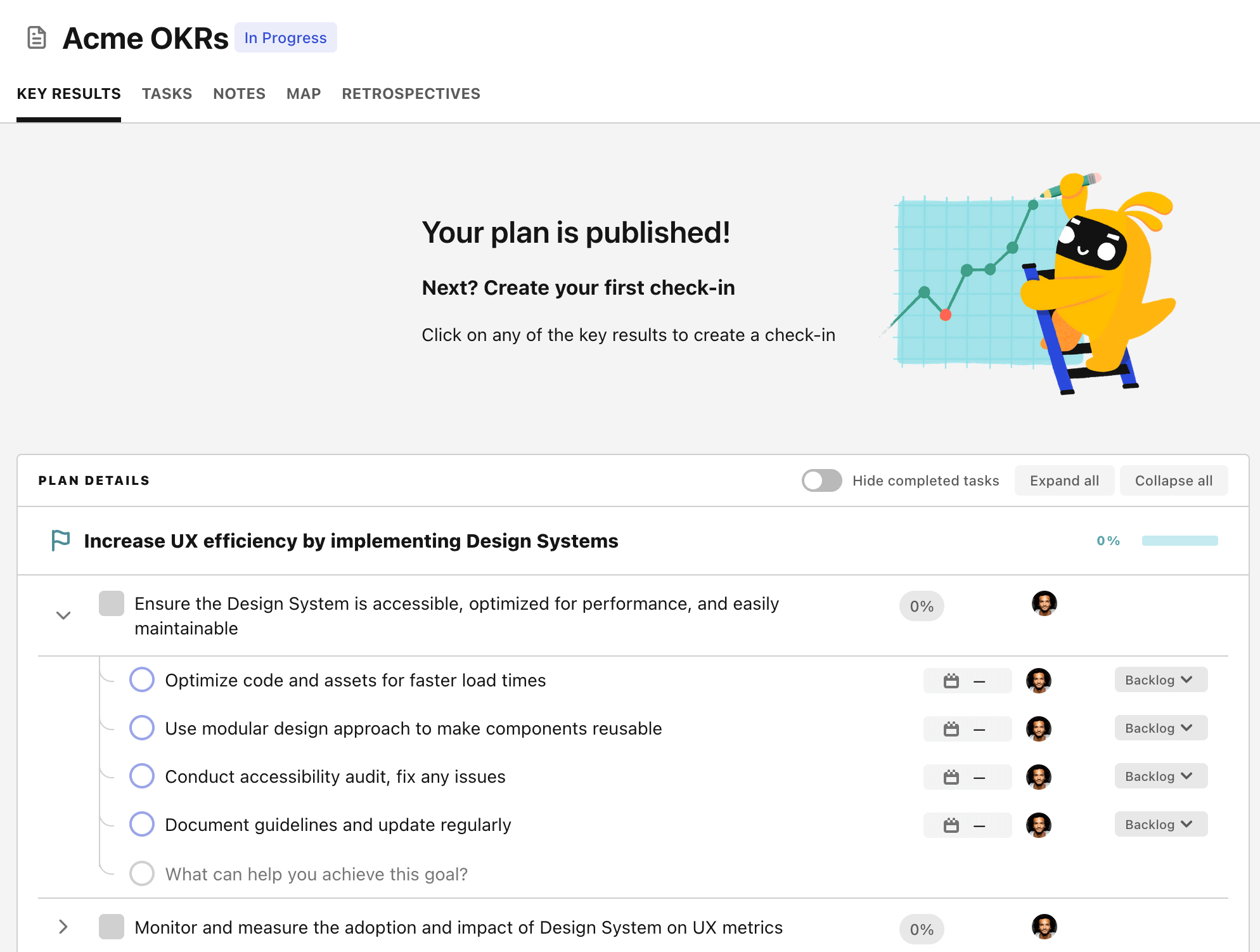OKR template to strategically invest $25,000 to yield 15% annual returns
Your OKR template
The second portion of the plan seeks to allocate $6,250 to high-value stocks with a past of consistent returns. This involves determining the investment distribution, identifying high-value stocks that have consistently returned profits and executing the allocation towards these identified stocks.
The third segment aims to assign the remaining $6,250 to bonds or other secure investments as a safeguard against potential losses. This requires researching and identifying secure investment options, deciding between bonds or alternative secure investments and allocating the remaining $6,250 towards these chosen investments.
The overall OKR strategy is to invest $25,000 strategically to yield an annual return of 15%, through a diversified investment strategy that ensures long-term growth, profits from high-value stocks and security against potential losses.
ObjectiveStrategically invest $25,000 to yield 15% annual returns
KRCommit $12,500 to diversified mutual or index funds for steady long-term growth
Select a range of mutual or index funds
Regularly monitor fund performance
Allocate $12,500 across chosen funds
KRAllocate $6,250 to high-value stocks with a history of consistent returns
Determine $6,250 investment distribution
Identify high-value stocks with consistent returns
Execute allocation towards identified stocks
KRAssign $6,250 to bonds or other secure investments to hedge against potential losses
Research and identify secure investment options
Decide on bonds or alternative secure investments
Allocate $6,250 towards chosen investments
How to edit and track OKRs with Tability
You'll probably want to edit the examples in this post, and Tability is the perfect tool for it.
Tability is an AI-powered platform that helps teams set better goals, monitor execution, and get help to achieve their objectives faster.
With Tability you can:
- Use AI to draft a complete set of OKRs in seconds
- Connect your OKRs and team goals to your project
- Automate reporting with integrations and built-in dashboard
Instead of having to copy the content of the OKR examples in a doc or spreadsheet, you can use Tability’s magic importer to start using any of the examples in this page.
The import process can be done in seconds, allowing you to edit OKRs directly in a platform that knows how to manage and track goals.
Step 1. Sign up for a free Tability account
Go tohttps://tability.app/signup and create your account (it's free!)
Step 2. Create a plan
Follow the steps after your onboarding to create your first plan, you should get to a page that looks like the picture below.

Step 3. Use the magic importer
Click on Use magic import to open up the Magic Import modal.
Now, go back to the OKR examples, and click on Copy on the example that you’d like to use.

Paste the content in the text import section. Don’t worry about the formatting, Tability’s AI will be able to parse it!

Now, just click on Import from text and let the magic happen.

Once your example is in the plan editor, you will be able to:
- Edit the objectives, key results, and tasks
- Click on the target 0 → 100% to set better target
- Use the tips and the AI to refine your goals
Step 4. Publish your plan
Once you’re done editing, you can publish your plan to switch to the goal-tracking mode.

From there you will have access to all the features that will help you and your team save hours with OKR reporting.
- 10+ built-in dashboards to visualise progress on your goals
- Weekly reminders, data connectors, and smart notifications
- 9 views to map OKRs to strategic projects
- Strategy map to align teams at scale